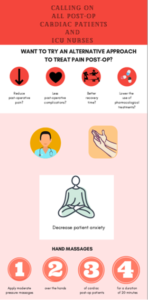Argerie Tsimicalis, RN, PhD, Associate Professor, Ingram School of Nursing, Faculty of Medicine and Health Sciences, McGill University. Twitter: @ArgerieT; https://argerietsimicalis.com
 This year I was tasked with the challenge of converting a historically didactic research course to be delivered remotely, asynchronously and experientially to 164 diploma-prepared nurses enrolled in their first year of the Bachelor of Nursing (Integrated) (BNI) Program at the Ingram School of Nursing located in Montreal, Quebec, Canada.
This year I was tasked with the challenge of converting a historically didactic research course to be delivered remotely, asynchronously and experientially to 164 diploma-prepared nurses enrolled in their first year of the Bachelor of Nursing (Integrated) (BNI) Program at the Ingram School of Nursing located in Montreal, Quebec, Canada.
Admittedly, a daunting task, for a few reasons. Our students come to us with limited exposure to reading journal articles in their diploma training, as noted in their online completion the “Sources of Practice Knowledge” administered on the first day of their research course1. Moreover, with many of them working as novice nurses, their interests lie in building their ‘clinical skills’ and adjusting to the realities of transitioning to the workplace, rather than learning about research.
Meanwhile, I cope with the struggles of how to ‘hook’ students to research and embrace evidence-informed nursing. If not, I worry I have contributed to unsafe care, poor patient outcomes, harmful policies and standards, and dismal transformation of complex health care systems. Daunting, for many other reasons as well. This is an unprecedented year for us all: professionally and personally, as we celebrate and contribute to the 2020 Year of the Nurse and Midwife call for stories, adjust to life with COVID-19, filter the news, join global movements, and at some point, longing for balance and social contact. For many of my students, they have been mandated by the ministry to return full-time to their clinical duties; others are balancing work, studies, and their children’s schooling; and others are caring for, or mourning the loss of a loved one to COVID-19.
2020 was a hard year for us all.
 Efforts to deliver this course remotely and asynchronously warranted me to re-think my multiple individual assessments and include, for the first time, a group assignment. Inspired by Evidence-Based Nursing Journal, I created a four-part assignment in collaboration with a Ms. Kayla Douglas, a second-year, BNI student (see picture, right), who was enrolled in the course the prior year. Over the course of the summer, we created an assignment called “Influencing Nursing: Collaborative Creation of an Expert Commentary, Infographic and Tweet” (https://mjm.mcgill.ca//NUR1-312-assignment)
Efforts to deliver this course remotely and asynchronously warranted me to re-think my multiple individual assessments and include, for the first time, a group assignment. Inspired by Evidence-Based Nursing Journal, I created a four-part assignment in collaboration with a Ms. Kayla Douglas, a second-year, BNI student (see picture, right), who was enrolled in the course the prior year. Over the course of the summer, we created an assignment called “Influencing Nursing: Collaborative Creation of an Expert Commentary, Infographic and Tweet” (https://mjm.mcgill.ca//NUR1-312-assignment)
The first part of the assignment sought, similar to the mandate of Evidence-Based Nursing, to offer nurses succinct expert commentaries, focusing on key study findings and implications for nursing practice. The assignment served as an example of a ‘Synopsis of Study’ or ‘Synopsis of Syntheses’ derived from the 6S hierarchy of pre-appraised evidence2. Students were required to self-select an article derived Ingram Faculty of Nursing Annual Research Report and refer to Jull (2007) for insights on how to write a commentary3. Over the course of the semester, students were expected to use their required textbook4 and seek other resources as needed, to help draft their commentary. Each week, students learned about and critically commented on varying studies including many Evidence-based Nursing commentaries using a social learning platform called “Perusall”5. The active reading was designed to help foster students’ critical analytical skills expected to be translated in their assignment. They received their weekly Perusall reading scores, ranging from 0 to 3. These scores were generated using artificial intelligence (AI) and aimed to enhance their critical reading.
 The second part of the assignment was aimed at optimizing the translation of research into practice by targeting audiences with varying health literary skills. Over the course of the semester, students were introduced to many infographic examples. Based on their selected articles, students were instructed to convey the key messages into a succinct, understandable and creative infographic. Some resources such as Mac Canvas (for Max OS X), Canva, Piktochart, Venngage, PowerPoint and Word were suggested to help design the infographic. They also referred Siricharoen and Siricharoen’s (2015)6 paper on “How Infographic should be evaluated?”, as this paper helped informed the creation of our infographic grading rubric as well.
The second part of the assignment was aimed at optimizing the translation of research into practice by targeting audiences with varying health literary skills. Over the course of the semester, students were introduced to many infographic examples. Based on their selected articles, students were instructed to convey the key messages into a succinct, understandable and creative infographic. Some resources such as Mac Canvas (for Max OS X), Canva, Piktochart, Venngage, PowerPoint and Word were suggested to help design the infographic. They also referred Siricharoen and Siricharoen’s (2015)6 paper on “How Infographic should be evaluated?”, as this paper helped informed the creation of our infographic grading rubric as well.
The creation of a Tweet comment served as the third part of the assignment. Students were asked to reflect on the reading “To Tweet or not to Tweet” (Killackey & Morley, 2019)7. They were also directed to the McGill guidelines for social media use and the social media directory for active institutional accounts. For the nuts and bolts of Twitter, our McGill Communication Team recommended the Hootsuite video and to follow up with any available Hootsuite free training options if desired. Finally, they were encouraged to follow some of our active nursing faculty (e.g. @NlfeeleyN) and students (e.g. AimeeRCastro) and maybe even contribute to a Tweetstorm. A Tweetstorm example was provided derived from a former research training event I had co-hosted, which is now housed on the Wakelet website containing 145 Tweets and interactions. Together, these were strategies designed to help students move beyond passive ways of disseminating knowledge and to think about how to incorporate innovative means to craft the message, package the information, and share the research findings.
 The fourth part of the assignment arose half-way during the delivery of the course when a partnership with the student-run, international, open access, McGill Journal of Medicine (MJM) was established to celebrate the BNI students’ important contributions to nursing research, and the 2020 Year of the Nurse and Midwife. The MJM created a Special Nursing Issue and included the students’ assignments as part of the call for papers. Students will be offered as a 2% bonus mark if they submit their assignment to MJM by the end of the fall semester. In so doing, they will learn of the peer review process and the ICMJE authorship guidelines. To date, this call has generated much interest among the BNI students but also among other nurses who have already begun submitting commentaries for publication consideration.
The fourth part of the assignment arose half-way during the delivery of the course when a partnership with the student-run, international, open access, McGill Journal of Medicine (MJM) was established to celebrate the BNI students’ important contributions to nursing research, and the 2020 Year of the Nurse and Midwife. The MJM created a Special Nursing Issue and included the students’ assignments as part of the call for papers. Students will be offered as a 2% bonus mark if they submit their assignment to MJM by the end of the fall semester. In so doing, they will learn of the peer review process and the ICMJE authorship guidelines. To date, this call has generated much interest among the BNI students but also among other nurses who have already begun submitting commentaries for publication consideration.
References
- Estabrooks, C.A., Chong, H., Brigidear, K., Profetto-McGrath, J. (2005) Profiling Canadian nurses’ preferred knowledge sources for clinical practice. Canadian Journal of Nursing Research, 37(2),118-40.
- DiCenso,, Bayley, L., & Haynes, R.B. (2009). Accessing pre-appraised evidence: fine-tuning the 5S model into a 6S model Evidence-Based Nursing, 12, 99-101.
- JullA. (2007). How to write a commentary—an editor’s perspective Evidence-Based Nursing,10, 100-103.
- Geri LoBiondo-Wood, G., Haber, J., Cameron, C., & Singh, M. (Eds.) Nursing Research in Canada: Methods, Critical Appraisal, and Utilization (4th ed). Elsevier.
- Miller, K., Lukoff, B., King, G., & Mazur, E. (2018).Use of a Social Annotation Platform for Pre-Class Reading Assignments in a Flipped Introductory Physics Class. Frontiers in Education, 2018(3).
- Siricharoen, W.V., & Siricharoen, N. (2015). How Infographic should be evaluated? ICIT 2015 The 7th International Conference on Information Technology, 558-564.
- Killackey T, & Morley G. (2019). To Tweet or not to Tweet? An argument for nursing presence in the Twittersphere. Nursing Ethics, 26 (7–8), 1903- 1905.